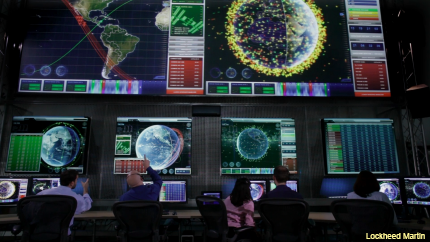Air Force begins construction of Space Fence tracking system
The system, being built by Lockheed Martin, will greatly increase the amount of orbital debris the service can keep tabs on.

A Lockheed concept of Space Fence’s operations center.
The Air Force and lead contractor Lockheed Martin have started construction on the large-scale Space Fence radar system that could increase the amount of space debris the service can track by an order of magnitude.
A ground-breaking ceremony in February marked the start of a 36-month construction project on Kwajalein Atoll in the South Pacific’s Marshall Islands, Lockheed said in an announcement. Space Fence, an S-band radar, will be located on the U.S. Army Garrison Kwajalein Atoll, although the Space Fence Operations Center will be co-located at Kwajalein Atoll and the Reagan Test Site Operation Center in Huntsville, Ala., known as ROC-H, according to a Defense Department release.
Space Fence will replace the Air Force Space Surveillance System, which dates to the 1960s and could up to about 20,000 objects, whether working satellites, retired satellites or debris. The increased fidelity of the new system, which is expected to come online in 2018, will boost that tracking ability to well over 100,000 objects—perhaps even several hundreds of thousands of objects—which the Air Force sees as a critical to avoiding collisions as space becomes increasingly crowded.
"Previously, the Air Force could only track and identify items the size of a basketball," Dana Whalley, the Space Fence program manager, said at the time of the groundbreaking. "With the new system, we'll be able to identify items down to the size of a softball. This will significantly increase our capability to provide predictive and actionable space situational awareness for the nation.”
The Space Fence is designed to track objects as small as 10 centimeters in Low Earth Orbit and support cued searches and uncued surveillance of objects in Medium Earth Orbit and above. It also will work with the Joint Space Operations Center’s Mission System to provide an integrated spapce operating environment military forces, according to the Army.
The installation at Kwajalein Atoll is one of two planned Space Fence locations. The second would be located in Australia, though that depends on further funding.
$914.7 million contract


